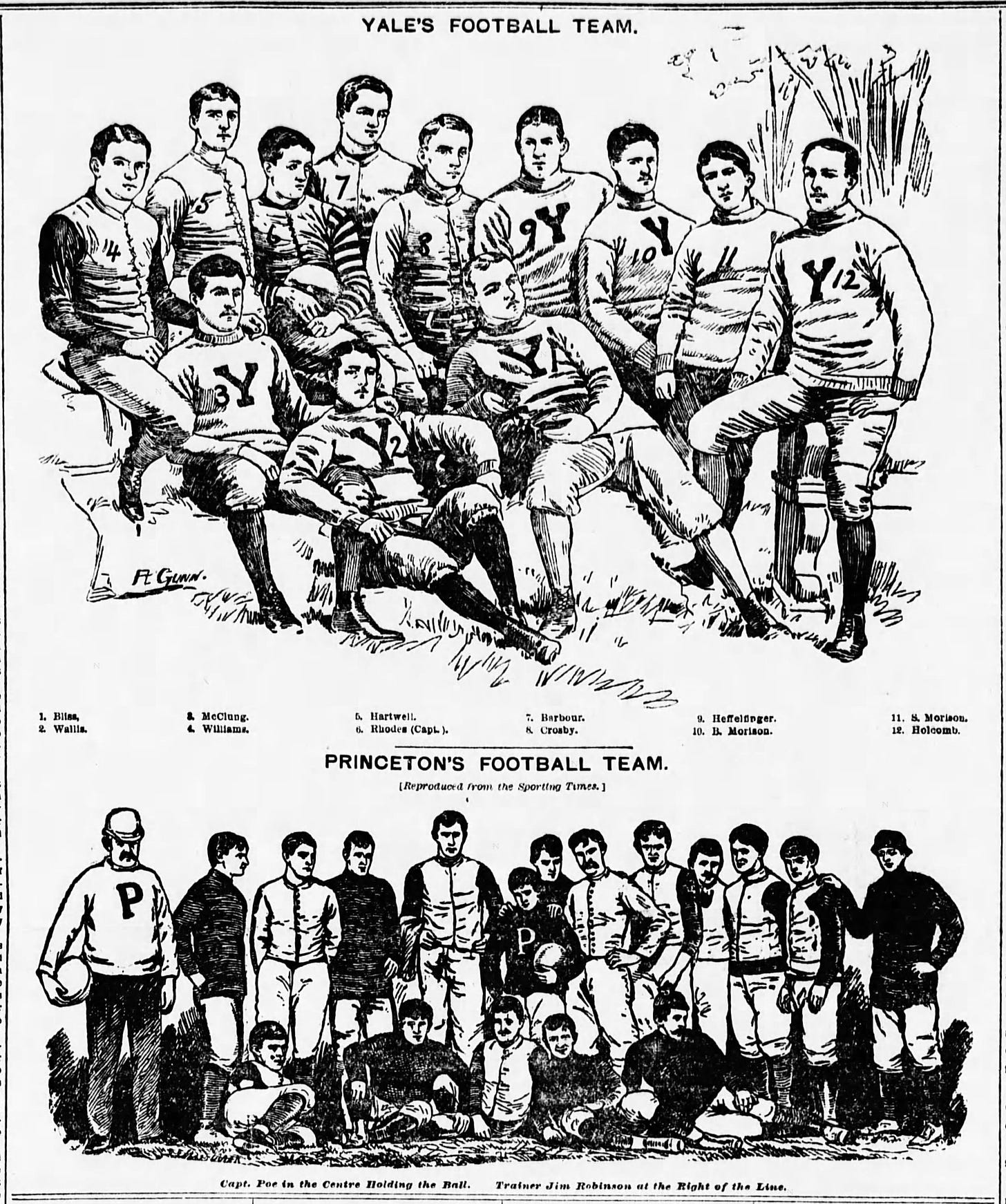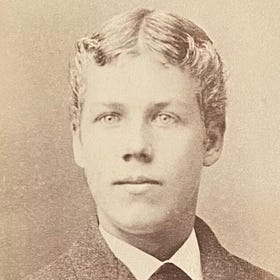Today's Tidbit... And The Band Played On
Wisconsin played at Northwestern on Saturday, exiting Northwestern's temporary stadium with a 23-3 win. Northwestern will use the on-campus temporary stadium this year and next while building a replacement for Dyche Stadium. Although the temporary stadiette seats only 12,000+, at least the stands remain standing before, during, and after the game.
That was not always the case with college football stadiums. I reviewed examples of bleacher collapses and other tragedies that made the news in the past, most of them occurring before WWI. Still, I wanted to return to the first disaster mentioned in that article, the case of the collapsing bleachers at the 1890 Princeton-Yale game at Eastern Park in Brooklyn.
Collapsing bleachers were more common in the past for several reasons. One was that schools sometimes installed temporary stands to accommodate the crowds for big games. The temporary stands were sometimes rented wooden stands used by traveling circuses; other times, they were built from scratch. Either way, some had rotted wood or lacked proper support. Inadequate maintenance led to similar problems with permanent stands on occasion.
The Thanksgiving Day game featured the 10-0-1 Princeton Tigers and the 12-1 Yale Bulldogs, who were coming off a loss to Harvard. Neither team could match Harvard's unblemished record and claim to supremacy. Still, it was the top football game of the year, especially among society folks.
Eastern Park was the newly built home of the Brooklyn Bridegrooms, who later became the Brooklyn Trolley Dodgers and Brooklyn Dodgers and are now the Los Angeles Dodgers. Eastern Park's main grandstand and bleacher extensions resulted in a short left-field fence, though the configuration worked well for football.
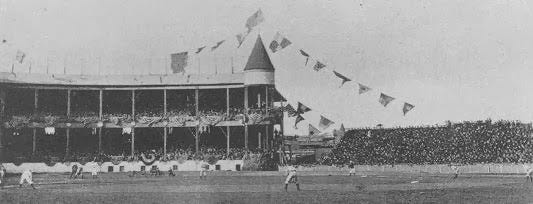
Eastern Park had permanent stands that sat 12,000, but expecting a big crowd, they contracted for another 3,000 bleacher seats for the eastern sideline. Another 5,000 to 10,000 stood around the field.
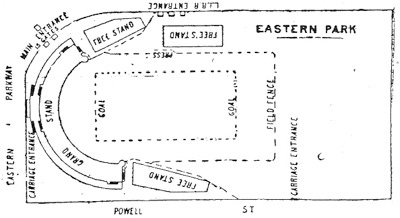
The temporary stands, 20 feet high and 200 feet long, came from Philadelphia's Players League baseball stadium. Built according to Ziegler's patented plans, they were a solid choice as long as the wood was not rotten. Unfortunately, it was.
The park opened four hours before the 2 o'clock start, and by noon, those without assigned seats had largely filled the temporary stands. At 12:10, however, a woman screamed as those stands began leaning forward and sliding to the northwest, reaching a 50-degree slant before boards snapped, and the entire structure collapsed, save a portion at the southern end.
Those sitting at the top of the stands were thrown to the ground, while those in the lower seats became covered by the fallen timber. Fans and the police freed those from beneath the stands within 15 minutes as ambulances arrived, and others went to the hospital in private carriages. By most counts, fifty to sixty fans received injuries worth noting in the newspaper, though some with broken arms and similar injuries opted to stay for the game.
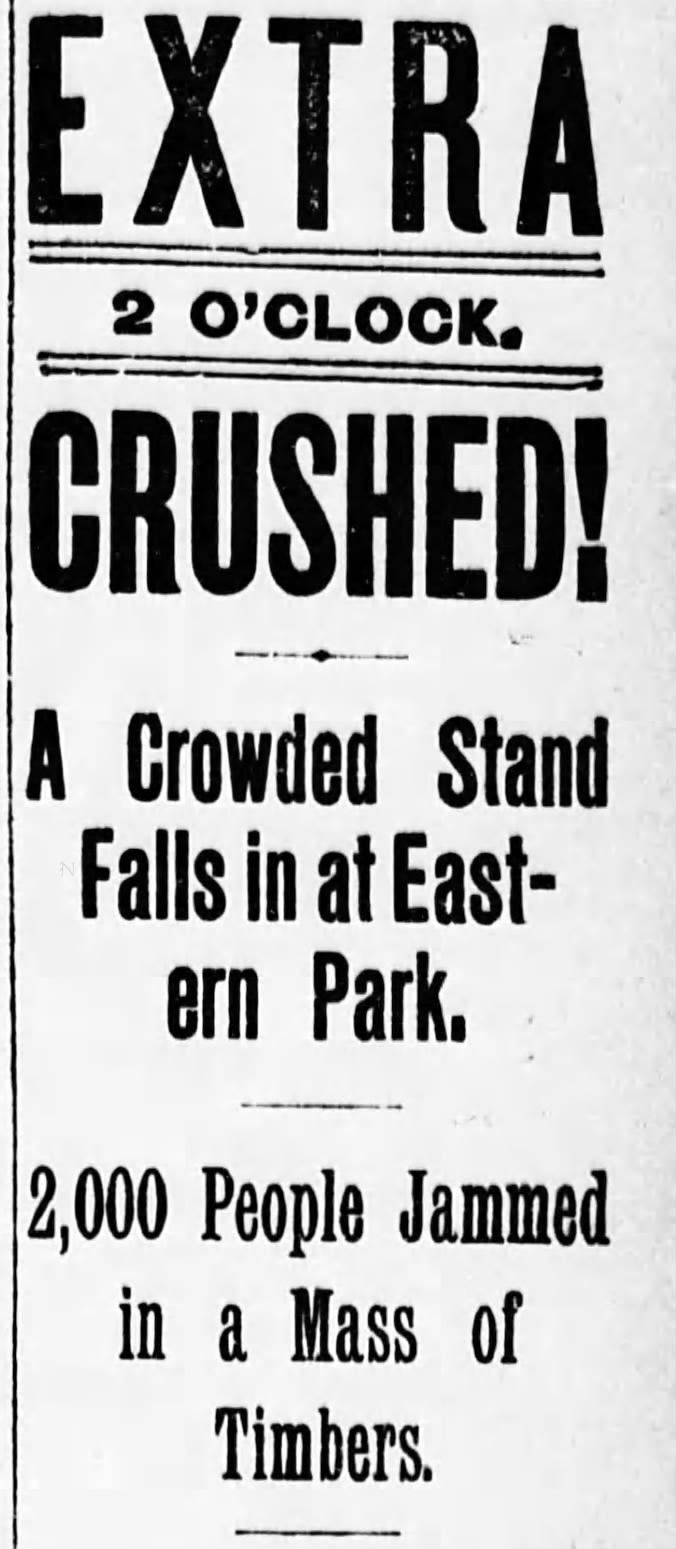
The fans seemingly forgot everything by game time. Princeton trotted onto the field wearing black sweaters with an orange P. Yale followed with white sweaters bearing a blue Y. After a quick five-minute warmup, the starting elevens took off their sweaters, revealing canvas vests covering their black or blue jerseys, and the game soon started. It was never close. Despite losing to Harvard the week before, Yale scored 16 in each half while holding Princeton scoreless to win 32-0.
While news of the bleacher collapse at the biggest game of the year reached every newspaper in the land, there does not appear to have been a follow-up investigation. Or, at least, whatever investigation occurred was not reported in the newspapers at any point in the next year.
As documented previously, bleacher collapses continued for several decades until most large stadiums converted to concrete and steel construction, many with the capacity to handle their largest crowds.
Reminder: The 150th anniversary of the first touchdown is two days away. The first one came in an 1874 Harvard-McGill game.
Who Scored Football's First Touchdown?
I'm nearing 1,000 articles on this site (not including podcast links), yet none address who scored football's first touchdown. I'm in good company. I googled "Who scored football's first touchdown?" and it appears that no one else has asked or answered that question, at least in the few sites, articles, and books that Google searches. Reddit has informa…
Football Archaeology is reader-supported. Click here to buy one of my books or otherwise support the site.


